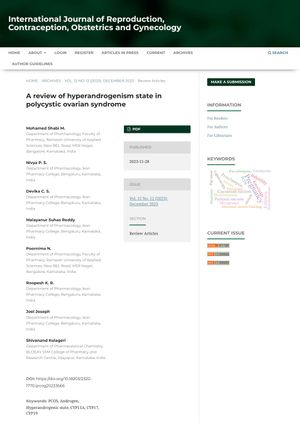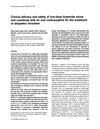A Review of Hyperandrogenism State in Polycystic Ovarian Syndrome
November 2023
in “
International journal of reproduction, contraception, obstetrics and gynecology
”

TLDR Polycystic ovary syndrome causes high male hormone levels, leading to symptoms like excess hair, acne, and fertility problems.
Polycystic ovary syndrome (PCOS) is a prevalent endocrine disorder in premenopausal women, caused by disturbances in the hypothalamic-pituitary-ovarian axis, abnormal steroidogenesis, and a combination of genetic and environmental factors. The disorder is characterized by the overexpression of the CYP11A, CYP17, and CYP19 genes, which disrupts the steroidogenic pathway and leads to a state of hyperandrogenism. This excess of androgen hampers folliculogenesis, leading to symptoms such as hirsutism, acne, and androgenic alopecia. The study also suggests that women with PCOS may have an excess of androgen during fetal life due to elevated expression of P450c17a throughout pregnancy, which could influence gene expression in adolescence and adulthood, potentially inducing PCOS. The disorder is also associated with anovulation due to the presence of many small follicles in the ovaries and irregularities in early stages of folliculogenesis.
